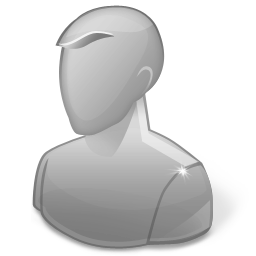Modern Internet security threats
11 years ago | 10144 Views

Computers, laptops and even smartphones are constantly exposed to different malicious programs aimed at causing various damages to the system. Computer systems are vulnerable to many threats that can inflict various types of damage.
Let's have a closer look at the most common malware types.
In our time, there is probably almost no person who uses a computer and does not use the Internet. The Global network is a major source of danger for your computer. A huge number of malicious software, at any time can get into your operation system and give you a lot of trouble. Intrusive ads, porn banners, extortion and fraud, identity theft, destabilization of the operating system, destroying all data on the hard drive - this is an incomplete list of problems that you may encounter when using the global network. So, the protection of workstations from malicious software is the number one task for any user.
Unfortunately, private security of any operating system, as a rule, cannot ensure the protection and usage of additional specialized anti-virus software is a must nowadays. This is especially true for those who use the Windows OS. Windows is the most popular OS in the world and therefore it is the most vulnerable to attack by malicious software.
The concept of "malicious software" means any program created and used for the implementation of unauthorized and often harmful actions. As a rule, malicious software consists of viruses, worms, trojans (keyloggers, password stealers), macro viruses, boot sector viruses, script viruses and trojans, crimeware, spyware and adware. Unfortunately, this is an incomplete list, which is updated with new and new types of malicious programs every year.
Here is a short list of most common types of computer threats any ordinary user of the global Internet can face.
- Cyber vandalism. The spread of malware to damage the user data and computer.
- Fraud. The spread of malicious software to obtain illegal profits. Most of the programs that is used for this purpose allow attackers to gather confidential information and steal money from users.
- Hacker attacks. Hacking of individual computers or entire computer networks to steal sensitive data or install malicious software.
- Phishing. Creating fake websites that are exact duplicates of existing ones (e.g. bank's website) in order to steal confidential data when users visit them.
- Spam. Anonymous mass e-mailing that clog users mailboxes. Usually it is used to advertise products and services, as well as for phishing attacks.
- Adware. The spread of malicious software that install on your computer the advertisements or redirecting queries to pay (often pornographic) web sites. It is often built into freeware or shareware programs, and installed on a computer without the user's knowledge.
- Botnets. “Zombie” networks that are consisting of computers that are infected with trojans (which may include and your own one) and are controlled by the same owner and used for its purposes (e.g. spamming).
Well, is it enough impressive? I think now you understand how important it is to take seriously the issue of security and protection of your computer from intruders and attackers with malicious programs.
At the moment, there are plenty of companies that develop anti-virus software. It's not a very easy task to determine what software is of high quality. However this is a very important moment, because it is your anti-virus is a wall that protects your system from the flow of network’s dangers and risks. And if the wall has a lot of holes, then it is useless to have such a wall. So in this article we will test the most common antivirus programs, learn about their capabilities and user interface, and of course see how well they cope with malicious software.
Visit http://malwarelist.net/ to learn more on computer security threats and different types of computer security software.
1
Tags: Cyber vandalism, Fraud, Hacker attacks, Phishing, Spam, Adware, Botnets, malicious software
Comments

Anonymous user 11 years
Nearly 73,000 Phishing Web Sites has registered in the first half of 2013. In January – June 2013 Anti-Phishing Working Group (APWG) has registered just over 72.7 million phishing web sites, whereas in the previous six months was found 123.5 thousands of such resources.
secnews's iBlogs
What iBlog
-
RCSAndroid - one of the most professionally developed and sophisticated Android malware
Posted: 2015 July 23 | 7407 Views -
Boeing subsidiary Insitu would like to be able to deliver spyware via drone
Posted: 2015 July 20 | 5806 Views -
Mobile Spy Software Maker mSpy Hacked
Posted: 2015 May 17 | 16770 Views -
Critical “Ghost” Remote Code Execution Vulnerability
Posted: 2015 February 01 | 9177 Views -
Awful things are what happens
Posted: 2015 January 16 | 6887 Views -
Four in 10 Americans face regular online fraud attacks
Posted: 2014 October 24 | 10096 Views -
The Zero-day vulnerability CVE-2014-4114 impacting all versions of Microsoft Windows
Posted: 2014 October 16 | 10746 Views -
The NSA Gets an OK for Telephony Metadata Collection Yet Again
Posted: 2014 July 09 | 10739 Views -
Yet another wave of digital destruction is coming
Posted: 2014 March 02 | 11899 Views -
Internet Monitoring and Brand Protection
Posted: 2014 January 13 | 9233 Views -
Computer Threat 3rd Quarter 2013 McAfee Report
Posted: 2013 November 20 | 6429 Views -
NSA: The Future Of Cloud Computing In U.S.
Posted: 2013 October 23 | 7586 Views -
The National Security Agency is harvesting hundreds of millions of contact lists from personal e-mail
Posted: 2013 October 15 | 17306 Views -
New Intel Chips Contain Back-Door Processor
Posted: 2013 September 23 | 7947 Views -
New Version of ESET Social Media Scanner
Posted: 2013 September 17 | 6590 Views -
Trend Micro warns of new spam campaign
Posted: 2013 September 16 | 7311 Views -
FBI Admits It Controlled Tor Servers
Posted: 2013 September 16 | 6377 Views -
Latest Java update will block exploits
Posted: 2013 September 16 | 6435 Views
Categories

